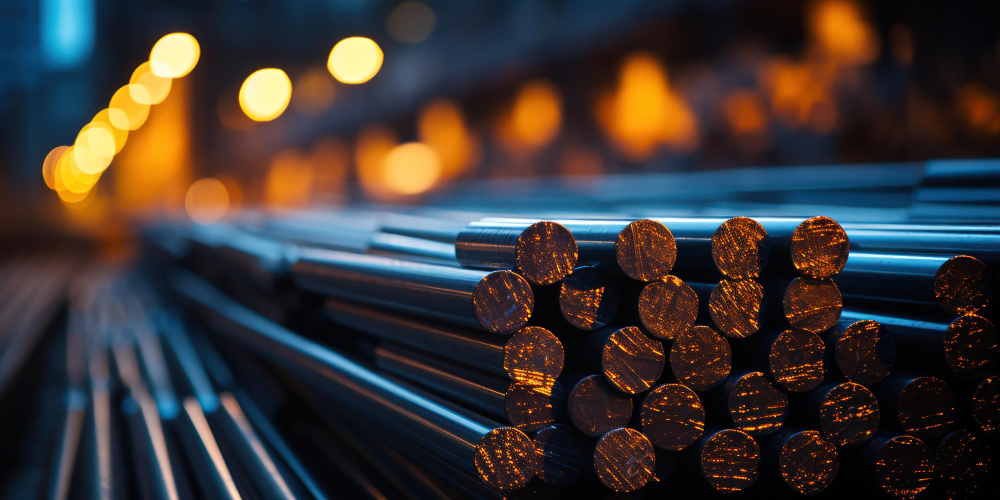Ferrochrome: The Essential Alloy in Stainless Steel Production

Ferrochrome: The Essential Alloy in Stainless Steel Production
Ferrochrome, also known as FeCr, is a vital alloy composed of chromium and iron, with chromium content typically ranging between 50% and 70%. This alloy is crucial in the production of stainless steel, imparting essential properties such as corrosion resistance, hardness, and luster. Ferrochrome is a key material in various industries, including construction, automotive, aerospace, and consumer goods, where the demand for durable and aesthetically appealing stainless steel products is high.
Production of Ferrochrome
The production of ferrochrome involves the reduction of chromite ore (FeO·Cr₂O₃) using carbon or silicon in a submerged electric arc furnace (SAF). The process can be broken down into the following steps:
Ore Selection and Preparation: High-quality chromite ore, along with a reducing agent like coke, is selected and prepared for smelting. The ore is crushed and screened to obtain the desired size.
Smelting: The prepared chromite ore is fed into the submerged electric arc furnace, where it is subjected to high temperatures. Carbon from coke acts as a reducing agent, extracting chromium from the ore and forming molten ferrochrome.
Tapping and Refining: The molten ferrochrome is periodically tapped from the furnace and can be refined further to adjust the carbon content, depending on the specific grade required.
Casting and Cooling: The molten ferrochrome is cast into molds or granulated and allowed to cool. The solidified ferrochrome is then crushed into smaller pieces for easier handling and use.
Quality Control and Packaging: The final ferrochrome product undergoes rigorous quality control checks to ensure it meets industry standards and customer specifications. It is then packaged and shipped to steelmakers and other end-users.
Types of Ferrochrome
Ferrochrome is available in several types, depending on its carbon content and intended application:
High Carbon Ferrochrome (HC FeCr): Contains 4% to 10% carbon and is the most commonly produced ferrochrome. It is widely used in the production of stainless steel and other alloy steels.
Medium Carbon Ferrochrome (MC FeCr): Contains 1% to 4% carbon and is used in steelmaking where lower carbon content is desired, particularly in the production of certain grades of stainless steel.
Low Carbon Ferrochrome (LC FeCr): Contains less than 1% carbon and is used in the production of high-grade stainless steel and other alloy steels that require minimal carbon content.
Extra Low Carbon Ferrochrome (ELC FeCr): Contains less than 0.03% carbon and is used in specialty stainless steels where extremely low carbon levels are required to prevent carbide precipitation.
Applications of Ferrochrome
Ferrochrome is primarily used as an alloying agent in the production of various types of steel, especially stainless steel:
Stainless Steel Production: The most significant application of ferrochrome is in the production of stainless steel. Chromium, the primary component of ferrochrome, is responsible for the corrosion resistance, hardness, and shiny appearance of stainless steel. It is used in a wide range of products, from kitchen utensils to architectural structures.
Specialty Steels: Ferrochrome is also used in the production of specialty steels, including heat-resistant and high-strength steels, which are used in applications such as turbines, jet engines, and other high-performance machinery.
Foundry and Casting: In foundries, ferrochrome is added to iron and steel castings to improve their hardness and wear resistance. This is particularly useful in producing wear-resistant parts like grinding balls, liners, and crusher jaws.
Aerospace and Automotive Industries: Ferrochrome is used in the aerospace and automotive industries for producing components that require high strength, corrosion resistance, and durability, such as engine parts, exhaust systems, and structural components.
Advantages of Ferrochrome
Corrosion Resistance: Chromium, the key element in ferrochrome, provides excellent corrosion resistance to steel, making it ideal for applications exposed to harsh environments, such as marine and chemical processing equipment.
Enhanced Hardness and Durability: Ferrochrome enhances the hardness and durability of steel, making it suitable for manufacturing tools, machinery, and other products that must withstand heavy use and wear.
Aesthetic Appeal: Stainless steel produced using ferrochrome is prized for its smooth, shiny finish, which is not only attractive but also easy to clean, making it popular for consumer goods like kitchen appliances and cutlery.
Versatility: The different grades of ferrochrome allow for precise control over the properties of the final steel product, enabling the production of a wide range of steel types with varying characteristics.

